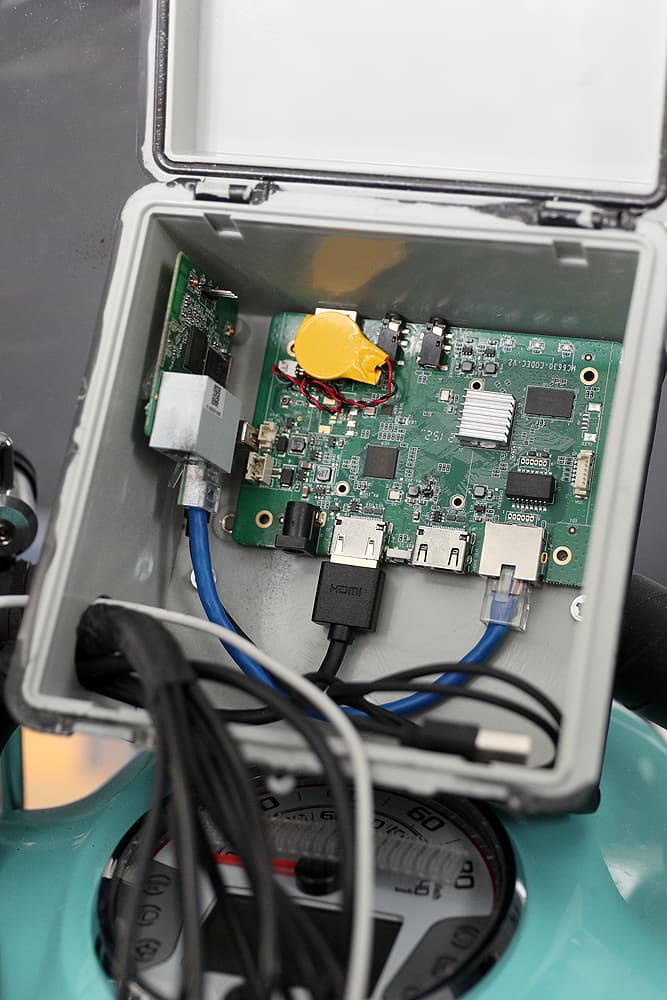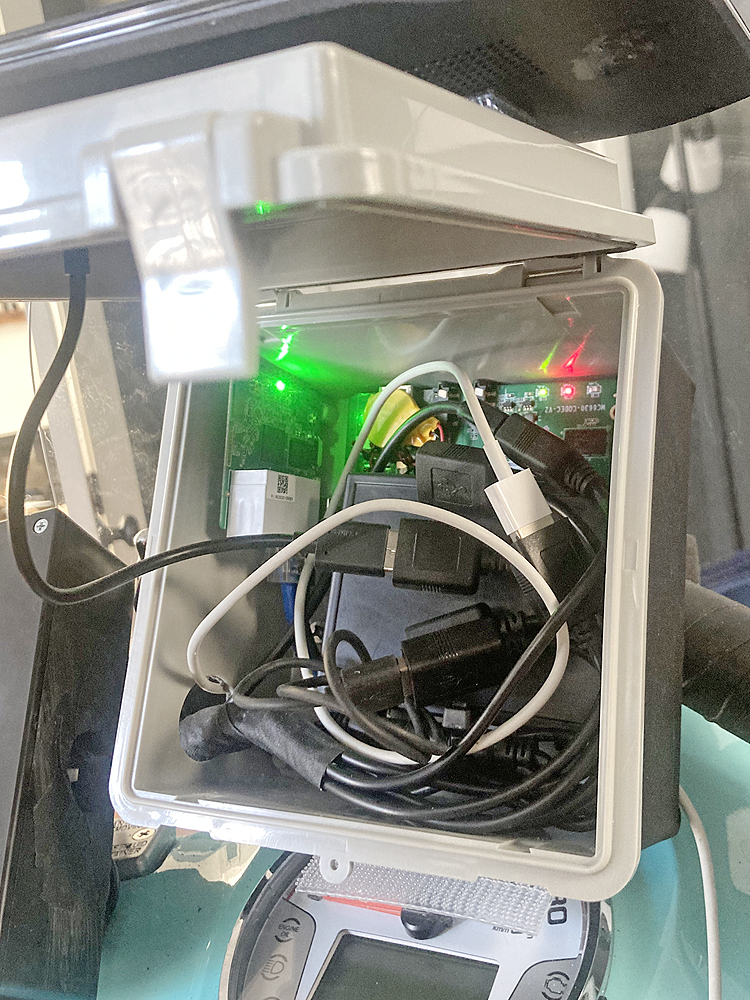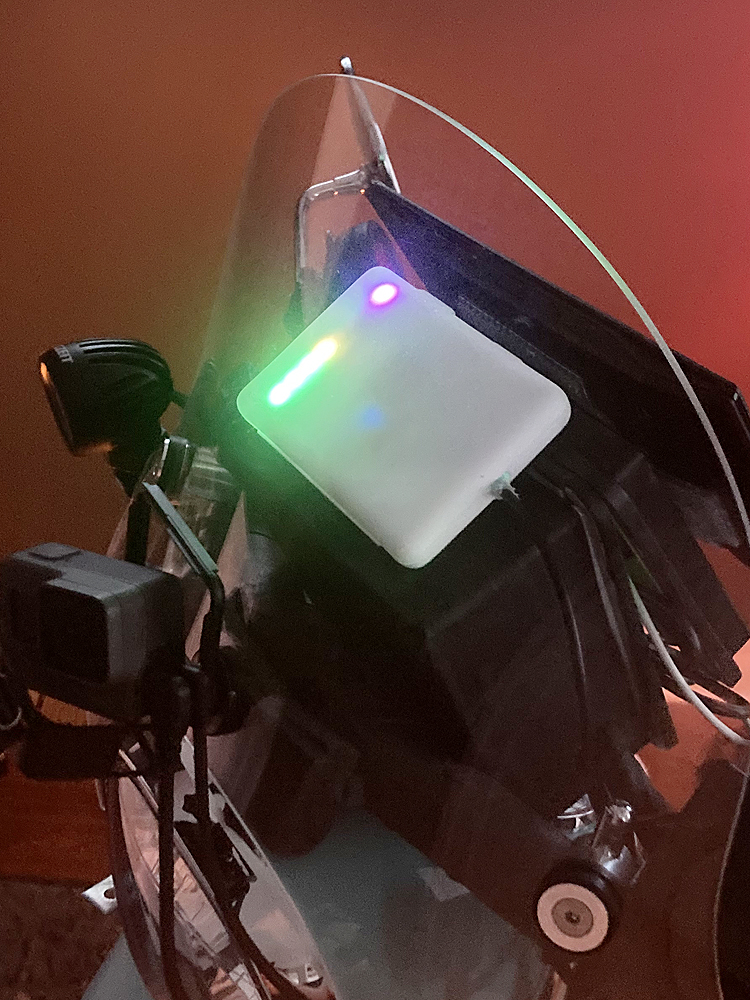Of course I had to add a Garrett spin to this adventure! My initial goal was to monitor as much as I could on and around the scooter and live stream the data for all to vicariously enjoy from the comfort of air conditioning.
Once I confidently addressed the various auxiliary 12V paths around the scooter, it was time to explore 5V.
I needed a large enough 5V/USB distribution box to accommodate a comedically large list of devices including but not limited to:
- Primary 8″ Garmin GPS
- Secondary 5″ Garmin GPS
- Primary Phone
- Front GoPro
- HDMI/Ethernet Streamer
- Nano LTE/VPN Router
- WiFi based GPS Tracker
- Rear GoPro
- Suit/Helmet
- Helmet GoPro
- Helmet Communications
- WiFi Sensors?
I purchased three 12V->5V adapters with 2x USB sockets for the front 5V distribution box. The waterproof box doubles as a mount point for the 8″ GPS as well as house the live streaming equipment.

Ethernet connectivity on a scooter…. I’ve gone too far.

A tight pack for all of the 5V gadgetry! I stress tested the heat dissipation and it was surprisingly acceptable. Everything worked super well — Switch the AUX power on, everything boots up and within a minute I have the front GoPro live streaming to YouTube. I’ve set up similar environments nearly 10 years ago so nothing was surprising, however what’s great in a lab isn’t always ideal in production…
Potholes….
When weather finally warmed up enough to take the scooter out for its maiden test voyage, the box containing all of the gadgetry was simply too large. The 8″ GPS mounted to the outside of the box was too far away from the center of the handlebars which resulted in an unacceptable level of shake. The box had to be smaller. Time to say goodbye to the streaming hardware.
I did my research and determined that the live stream would be, at best, 60-70% effective based on the route we would take. Cellular antennas are rare in many places so I figured I could save the amps and IT troubleshooting/distractions.

I soldered up an ESP32 chip to monitor a variety of physical elements of the bike. I also added a GPS module to it and fed all of the data back to a server in Minneapolis. This custom tracking worked really well in tests! I may incorporate versions of it before the start of the adventure! I added lights to the project box which allowed me to instantly see whether all systems were operational and communicating with the server.

I did end up uninstalling a second ESP32 circuit located under the engine that was monitoring engine temperatures, RPM, and road/surface temps. In the end I decided it was too much overhead and would distract me far too much.